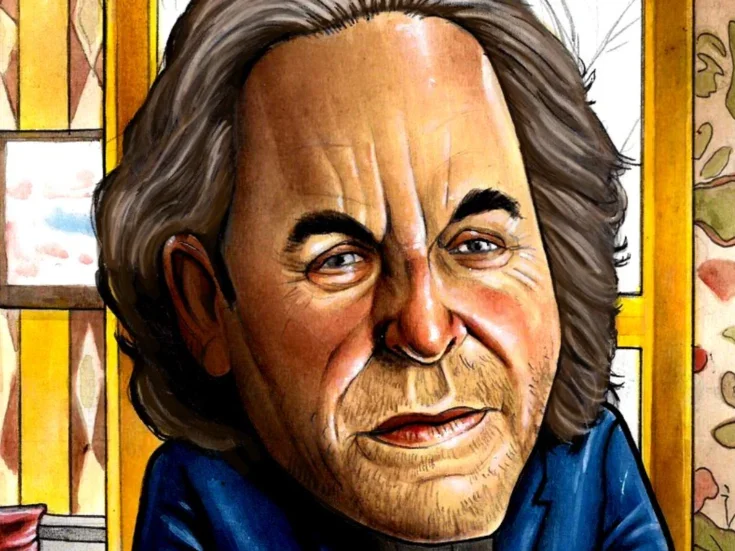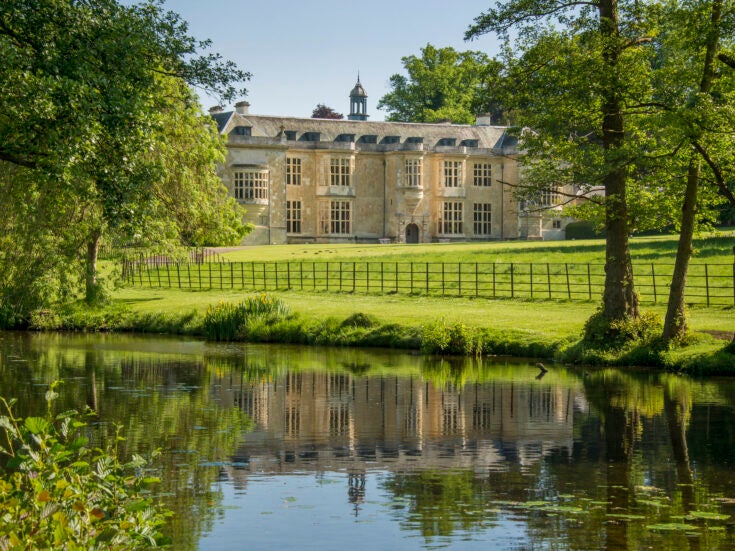
Jamaica is overcoming the headlines and returning to the glamour of the Fifties. Those were the days, says William Cash
I DO NOT know who invented the phrase ‘jet-set’, or for how long it has been around, but in the Forties and Fifties Jamaica was — to borrow a phrase from Tom Wolfe — the irresistible destination of those who insisted on being where things were happening (socially, that is) in the winter months. Members of the original jet-set who had winter villas in Jamaica in the Fifties included Ian Fleming, Noël Coward and Errol Flynn.
Then, the smart way to live was either to own a private villa (or ‘cottage’ as they were known on the exclusive Round Hill estate founded by John Pringle, the Mark Birley of the Caribbean), or to have a villa close to the sea around the luscious tropical beachland paradise of Portland and the harbour of Port Antonio on the north-east coast.
‘Once you go, you know’ is Jamaica’s jaunty tourist slogan and it is something of a tragedy — or a blessing if you are a travel snob who likes to be away from the madding A-list crowd — that too many people are probably put off travelling to Jamaica because of recent violent headlines. There is no question that the Caribbean coast around Port Antonio — not far from where Ian Fleming had his Goldeneye villa — is among the most spectacular and truly charming secrets of the Caribbean.
The only place to stay around Port Antonio is the quirky, hip Geejam hotel and spa on the old San San Estate — which was the Beverly Hills of Port Antonio in the Fifties and Sixties. The six-acre estate, built into the side of a sub-tropical bush jutting out towards the sea, is a collection of hip bungalows, cabins, cottages and private villas, all decorated individually in a minimalist zen-like white chic with Wi-Fi and spectacular views over the sea.

The hotel is exactly the sort of place that you would expect to encounter Amy Winehouse (Geejam boasts its own state-of-the-art recording studio where many celebrated bands have cut albums). There is also a ‘healing spa’ and an outdoor Bush Bar planted with hundreds of fig trees, plus an open-air pool table. The hotel also has several private villas (one with its own pool) and feels like a cross between the world’s chicest luxury rehab, an art gallery and a designer hotel. When Grace Jones recently stayed, she wrote in the guest book: ‘I came. I saw. You conquered me!’
Part of the charm of the area is that unlike the north-west side of the island, where the exclusive Round Hill and Tryon estates are (Hugh Grant recently spent Christmas in a villa close to the golf course), Port Antonio does not have a bustling international airport nearby. The only way to get there is a 2½-hour taxi journey along a winding, hair-raising road that cuts through forests and sub-tropical jungles.
Port Antonio is the exact opposite of Montego Bay, where fat American tourists in shiny tracksuits and gold chains sit around the marble lobby swigging beer and watching the American football on cable. The slightly run-down former jet-set resort is a real step back in time to when the likes of Errol Flynn (the marina is named after him) would waterski in the harbour and European royalty like the Habsburgs bought up part of the local peninsula.
Unlike the north coast of Jamaica, there are no championship golf courses and no ‘caddy concierges’ whom you pay $20 to run behind you as you play. Port Antonio is the real ‘old’ Jamaica, down to the local weed and bongs that you can openly buy on little stalls set out on the local beach around the famous Blue Lagoon, one of the most beautiful natural springs in the Caribbean.
If you want to buy land and build yourself a villa, drive through the old gates of the old San San golf course or take the Geejam boat around the crystalline waters of Frenchman’s Cove beach, which Condé Nast has rated one of the top half-dozen in the world. The water is sub-tropically green and blue, with both hot and cold currents so you feel as if you are swimming in a mineral bath jacuzzi. Local waiters will serve you chilled Red Stripe beer on the invariably deserted beach.
THE GEEJAM ESTATE is unique and intensely private and is set across six acres of the foothills of San San village where beach villas — despite the headlines — still cost US$3 million. Nearby are the Scatter, Reich and Somerset waterfalls. Crime is almost non-existent and my favourite moment during my trip to Jamaica came when my taxi driver suddenly screeched on his brakes as we were driving through Port Antonio and pointed to an elegant elderly woman in a silk headscarf who was carrying a bag of shopping. ‘That’s Errol Flynn’s wife,’ my driver said. ‘He left her his estate and she likes it here so much she never left.’

Back in Kingston, I stayed a few nights at the city’s best business hotel: the Spanish Court Hotel, a gated fortress less than a javelin’s throw from the British High Commission. ‘Kingston hadn’t had a new hotel built for 13 years,’ developer Chris Issa told me. A former barrister who has also written a bestselling book on the country’s mores and manners (which is the Jamaican equivalent of The Sloane Ranger’s Handbook), Chris explained that if I booked a table for dinner at 8pm, I would be expected at around 9pm.
Buy The Sloane Ranger’s Handbook from Amazon
‘Punctuality is a major problem in the country,’ he said. ‘It’s better than it was, but Jamaican time takes some getting used to.’
After consulting a New York Times travel article on Kingston, I deliberately chose the closest restaurant I could find to my hotel — a blues bar called Redbones, just a few minutes’ walk away — and informed the hotel concierge. Before heading out of my room, I also sat down at my desk and wrote an email to a friend along the lines that if I didn’t make it back that night and was later found shot in alley on Emmanuel Road — the main thoroughfare that I had to walk along for a few hundred yards to make it to the turning to the restaurant — at least I would have gone the way any true foodie would want: trying to find the best restaurant in town.
Then it was off to Round Hill, the famous international demi-monde hotel and exclusive private villa resort, which is the Sirenuse of the Caribbean. Unquestionably it is the chicest hotel address on the island. Noël Coward bought one of the first villas after sitting next to founder John Pringle on a plane to New York. (Coward previously owned a villa near Port Antonio.) JFK chose Round Hill for his honeymoon and other visitors and residents have included Alfred Hitchcock, Grace Kelly, Oscar Hammerstein, the Borghese family and the Rothermere family (who recently sold up).
I knew I was going to like the place at lunch when the hotel’s highly amusing and charming managing director Josef (also the Austrian honorary consul in Jamaica) casually dropped the word ‘plantocracy’ into our conversation, referring to the old local families that remain as ‘beach club’ members. Then I read a framed obituary of John Pringle which revealed that he insisted that the housekeeping staff individually clean the inside of every guest’s toothpaste cap.
Like Colin Tennant, Pringle never made any money out of the place, despite having all villa owners sign a lease that allowed them to stay in their own houses for a maximum of six months a year; the rest of the time they are obliged to rent their properties (they get a 20 per cent cut) as a way of bringing in revenues to the Round Hill Company.
Ralph Lauren has got around the lease, however, by simply buying two houses — so he can switch from one residence to another and never has to rent out either. Now that’s what I call style.
From top: The Seaside Terrace at Round Hill; the Deluxe Cabin Rocksteady







